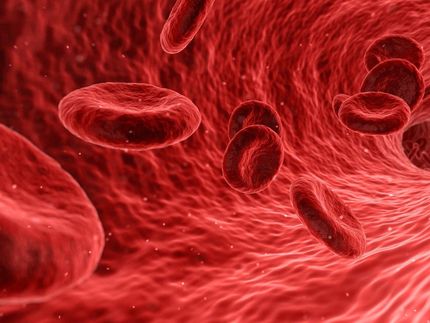EG 427 announces final Series A closing, achieving €18 million in total funds raised
"EG110A is the first genuinely innovative approach to be developed for patients suffering neurogenic bladder overactivity in more than a decade"
EG 427, a biotechnology company leading the development of pinpoint DNA medicine solutions, announces the final closing of a Series A financing. EG 427 raised an additional €5 million in the final closing from a combination of existing investors and new family office investors, bringing the total raised in the Series A round to €18 million.
“We are delighted to conclude this Series A round with strong support from our existing investors, as we also welcome new investors,” said Philippe Chambon, M.D., Ph.D., Founder, Chairman and Chief Executive Officer of EG 427. “The funds raised will be used to advance our pipeline, culminating in the Investigational New Drug application filing in Q1 2024 for the first clinical study of our lead product, EG110A. Thanks to our unique ability to deliver gene therapies to targeted tissues with pinpoint accuracy, EG110A could become the first gene therapy product to treat neurogenic bladder overactivity and other bladder pathologies. It also could become the first gene therapy targeting a chronic disease with high morbidity in a large underserved patient population to reach the market.”
“EG110A is the first genuinely innovative approach to be developed for patients suffering neurogenic bladder overactivity in more than a decade. Compared to other experimental therapeutics at this stage of development, it is de-risked by two key precedents. First, the way EG110A exerts efficacy is similar – but with potential critical improvements in safety and efficacy – to a surgical option for this condition, called sacral dorsal root rhizotomy; and, second, the recent FDA approval of the first non-replicative (nr) HSV-1 vector gene therapy confirmed that this approach has strong therapeutic potential outside of cancer,” said Cornelia Haag-Molkenteller, M.D., Ph.D., Chief Medical Officer of EG 427. “We are finalizing preparations to initiate clinical trials with EG110A in Q1 2024. We believe the established development and regulatory path, combined with the unmet need for a well-differentiated product like EG110A allows us to progress rapidly and potentially bring a second non-oncolytic nrHSV-1 genetherapy to patients.”
Neurogenic bladder dysfunction is a chronic and dangerous condition suffered by people living with spinal cord injuries or other neurodegenerative diseases such as multiple sclerosis or Parkinson’s disease.
Prof. Pierre Denys, Head of Urology department at R.Poincaré Hospital in Paris and co-founder of EG 427, said: “Neurogenic bladder overactivity patients endure frequent incontinence episodes due to their condition. It has a high psycho-social burden and negatively impacts quality of life. It also is a medical threat associated with recurrent urinary tract infections, and can harm the patients’ kidneys when not properly managed. Even with currently approved drugs, there remains a major medical need for long-lasting solutions with fewer side-effects.”
Existing drugs act by paralyzing the bladder muscle, in more or less selective ways, and can lead to urinary retention, also associated with infections. Based on highly targeted gene therapy delivery afforded by the nrHSV-1 vectors, EG110A, by contrast, selectively silences only the type-C sensory neurons in the bladder by delivering botulinum toxin F light chain (BoNT/F LC). This approach has been shown to preserve bladder muscle function in preclinical testing. Thanks to the local administration of the nrHSV-1 vector into bladder muscle and the vector’s natural tropism from there to sensory neurons, EG110A achieves exquisite specificity for targeted neurons, without spreading systemically like other smaller viral vectors used in gene therapy, such as adeno-associated virus (AAV). Compared to available treatments, EG110A may also provide long-term efficacy, reducing or even potentially obviating the need for repeated injections.
EG110A has shown proof-of-concept efficacy in multiple, relevant preclinical models including for bladder dysfunction. Separately, its mechanism of action, the silencing of sensory neurons, has been clinically validated by a surgical procedure known as a sacral dorsal root rhizotomy, which is almost never used since it leads to other impairments. This surgical technique severs dorsal nerve roots in the spinal cord and is not selective for bladder sensory neurons as expected with EG110A.
Later this year, EG 427 will be initiating a Series B fundraising to finance clinical development of EG110A and advance other pipeline products.
Something is happening in the life science industry ...
This is what true pioneering spirit looks like: Plenty of innovative start-ups are bringing fresh ideas, lifeblood and entrepreneurial spirit to change tomorrow's world for the better. Immerse yourself in the world of these young companies and take the opportunity to get in touch with the founders.
See the theme worlds for related content
Topic world Gene therapy
Genetic diseases once considered untreatable are now at the center of innovative therapeutic approaches. Research and development of gene therapies in biotech and pharma aim to directly correct or replace defective or missing genes to combat disease at the molecular level. This revolutionary approach promises not only to treat symptoms, but to eliminate the cause of the disease itself.

Topic world Gene therapy
Genetic diseases once considered untreatable are now at the center of innovative therapeutic approaches. Research and development of gene therapies in biotech and pharma aim to directly correct or replace defective or missing genes to combat disease at the molecular level. This revolutionary approach promises not only to treat symptoms, but to eliminate the cause of the disease itself.



























































